Fine Ceramics, sometimes referred to as "advanced ceramics," are engineered materials that support the development of cutting-edge technology.
Fine Ceramics in Space
Advancing Space Exploration with Fine Ceramic Technology.
Shock-Proof Ceramic Materials in Asteroid Probes Endure Extreme Environments
The Japanese asteroid probe Hayabusa was the first of its kind to successfully bring back sample materials from an asteroid. Alumina fine ceramic components which are known to have excellent strength, corrosion resistance, heat resistance, and insulation, and a metallization brazing technology along with various other bonded materials were used in the lithium-ion battery terminals, enabling the probe to be hermetic, even in space. These lithium-ion batteries served as the emergency power source for Hayabusa and its successor, Hayabusa 2.
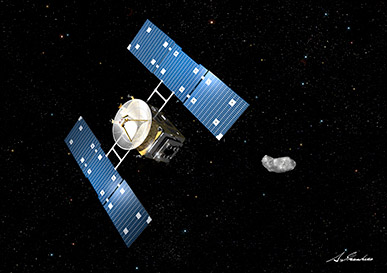
Hayabusa Asteroid Probe
(Illustration by Akihiro Ikeshita)
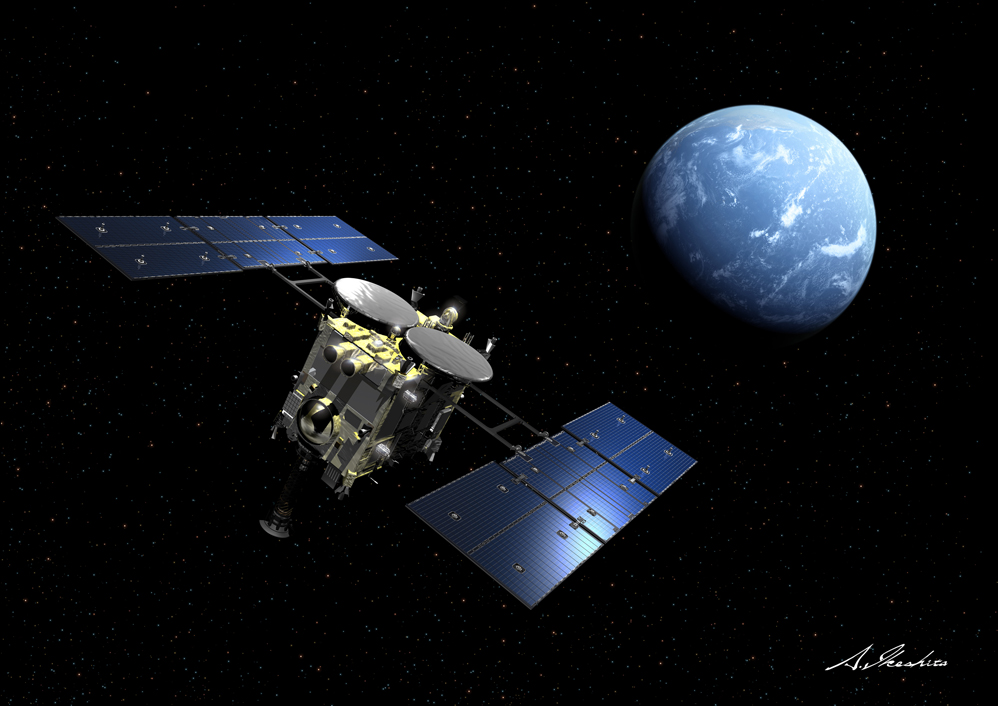
Hayabusa 2 Asteroid Probe
(Illustration by Akihiro Ikeshita)
Fine Ceramics and Derived Technologies
Kyocera’s high-purity alumina fine ceramic components were used for the lithium-ion battery terminals. These components feature a metallization technology that forms a metal layer on the ceramic surface. The battery's cover and terminal, which are metals, are bonded via insulating, with metalized fine ceramics sandwiched between them. By providing strong bonding properties while maintaining insulation, fine ceramics help prevent electrolyte leakage inside the batteries when in space, where the atmospheric pressure is one ten-billionth of the pressure on Earth.
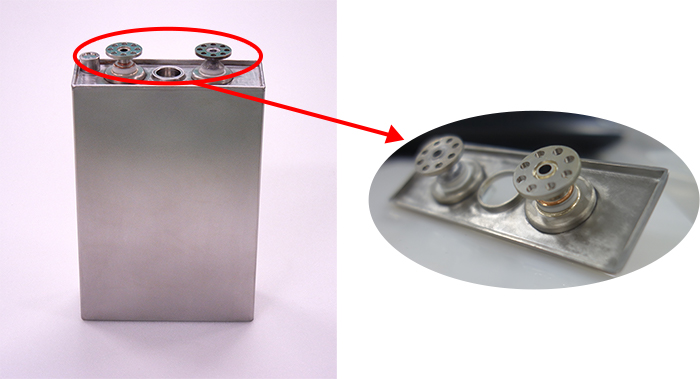
Lithium-ion Battery
Battery Terminal
Photos: Furukawa Battery Co., Ltd.
Lithium-ion Battery / Battery Terminal
Photos: Furukawa Battery Co., Ltd.
About the Hayabusa Project
Hayabusa left earth for the asteroid Itokawa in May 2003. It landed on Itokawa and collected a sample in November 2005. There were problems including a communication blackout and the shutdown of the main engine due to device defects, raising concerns that Hayabusa might not be able to return to Earth. However, the asteroid probe entered the Earth's atmosphere and succeeded in bringing back a capsule containing samples to our planet in June 2011.
Hayabusa 2, the successor to Hayabusa, set off on its mission to the asteroid Ryugu in June 2014. After arriving on the asteroid in June 2018, Hayabusa 2 returned successfully to Earth along with its capsule carrying samples from Ryugu in December 2020.
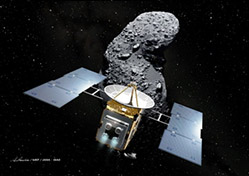
Hayabusa approaching Itokawa
(Illustration by Akihiro Ikeshita)
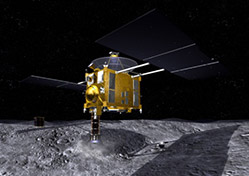
Hayabusa collecting a samples on Itokawa
(Illustration by Akihiro Ikeshita)
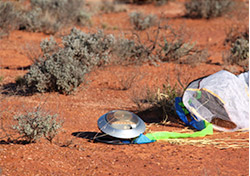
Capsule that successfully returned to Earth
(Photo: Japan Aerospace Exploration Agency (JAXA))
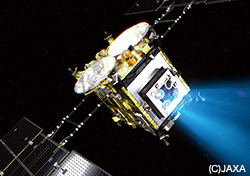
Hayabusa 2 approaching Ryugu
(Photo: Japan Aerospace Exploration Agency (JAXA))
Contributing to the Development of Reusable Rockets
Development is underway for rockets that can be reused after returning from space. The Japan Aerospace Exploration Agency (JAXA) chose Kyocera's ceramic components for an experimental reusable rocket where they used in a sensor that accurately monitors the state of the liquid fuel from refueling to flight.

People who read this page also read.

Strength (2)
Strength (2)
Rigidity—Less Elastic Deformation Compared to Metals
Rigidity—Less Elastic Deformation Compared to Metals
Characteristics of Fine Ceramics

Fine Ceramics at Work in the Deep Sea
Fine Ceramics at Work in the Deep Sea
Playing an Important Role in Submarine Earthquake Observation
Playing an Important Role in Submarine Earthquake Observation
Learning about Fine Ceramics
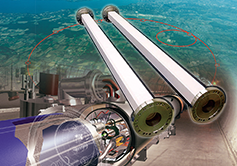
Fine Ceramics at Work in the Large Hadron Collider
Fine Ceramics at Work in the Large Hadron Collider
Providing Support 100-m Underground to Control Protons and Observe Experimental Results
Providing Support 100-m Underground to Control Protons and Observe Experimental Results
Learning about Fine Ceramics
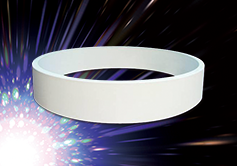
Fine Ceramics at Work in the ITER (International Thermonuclear Experimental Reactor)
Fine Ceramics at Work in the ITER (International Thermonuclear Experimental Reactor)
Developed Technology for Large-Diameter Insulated Fine Ceramic Ring
Developed Technology for Large-Diameter Insulated Fine Ceramic Ring
Learning about Fine Ceramics
If you want to use ceramics in business, click here.
Kyocera's Fine Ceramics products (All websites below open in a separate window.)
Product Category
 Semiconductor / LCD Processing Equipment
Semiconductor / LCD Processing Equipment
 Life / Culture / Industrial Machines
Life / Culture / Industrial Machines
 Wireless Communications
Wireless Communications
 Computer Peripherals
Computer Peripherals
 Environmental Preservation / Renewable Energy
Environmental Preservation / Renewable Energy
 Medical Equipment / Devices
Medical Equipment / Devices
 Single-Crystal Sapphire Products
Single-Crystal Sapphire Products
 Metallized / Vacuum Components
Metallized / Vacuum Components
 Electronics Industry
Electronics Industry
 Heaters
Heaters
 Piezoelectric Ceramics
Piezoelectric Ceramics
Search by Material
 Alumina
Alumina
 Silicon Nitride
Silicon Nitride
 Silicon Carbide
Silicon Carbide
 Sapphire
Sapphire
 Zirconia
Zirconia
 Cordierite
Cordierite
 Yttria
Yttria
 Aluminum Nitride
Aluminum Nitride
 Cermet
Cermet
 Mullite
Mullite
 Steatite
Steatite
 Forsterite
Forsterite
Search by Property/Characteristic


- Thermal Properties
- Coefficient of Thermal Expansion
- Thermal Conductivity
- Heat Shock Resistance

- Electrical Properties
- Insulation / Semiconductivity

- Chemical Properties
- Chemical Resistance






